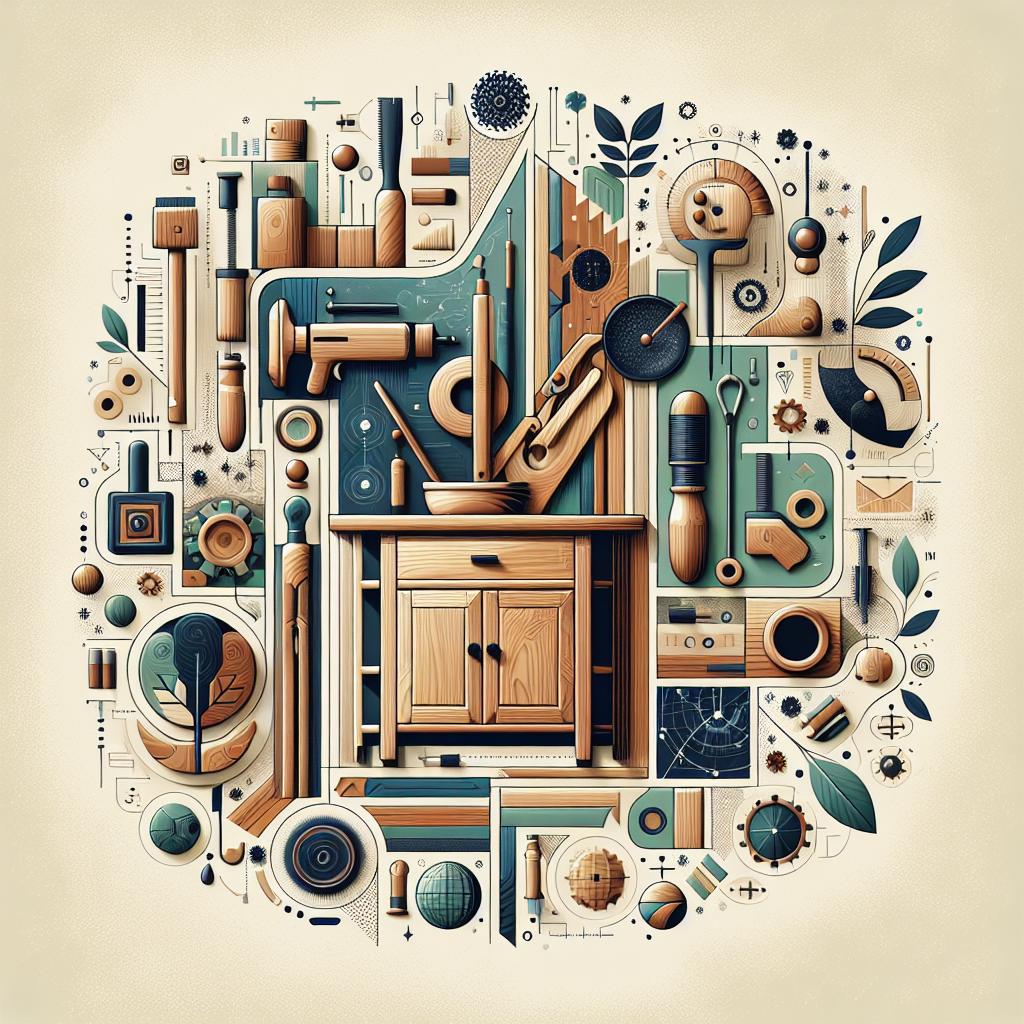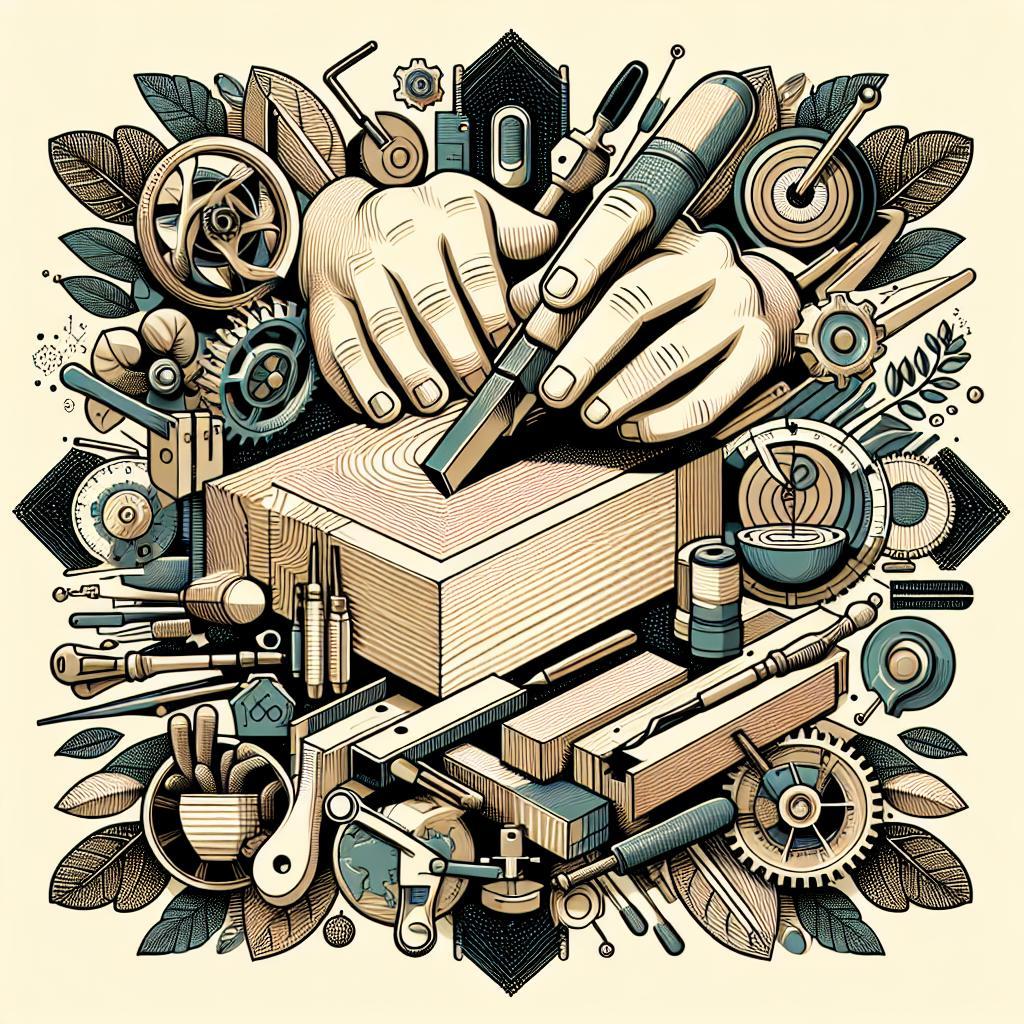Title: Crafting Craftsmanship: Exploring Cabinetmaking for Workshops
In the heart of every workshop lies the potential for transformation—creativity waiting to be forged into tangible results. At the center of this transformation is the art of cabinetmaking, a skill that marries functionality with aesthetics, allowing artisans to breathe life into wood, shaping it into practical, beautiful solutions for both work and home. This article invites you to explore the world of cabinetmaking tailored specifically for workshops. Whether you are a seasoned craftsman looking to refine your techniques or an enthusiastic beginner eager to embark on a new journey, we will delve into essential tools, fundamental techniques, and inspiring projects that will empower you to elevate your workshop experience. Join us as we uncover the intricate dance between precision and artistry, and discover how the timeless craft of cabinetmaking can enhance both your skills and your creative space.
Exploring Essential Tools and Equipment for the Modern Cabinetmaker
In the realm of modern cabinetmaking, having access to the right tools is essential for both efficiency and the precision of your work. Power tools have revolutionized the craft, enabling cabinetmakers to achieve high-quality results with less effort. Equipment like table saws, router tables, and bandsaws are staples in any workshop, allowing for clean cuts and intricate designs. Additionally, handheld tools such as jigsaws, routing tools, and sanders provide versatility for detailed finishing touches. A well-stocked cabinetmaker’s arsenal should also include measuring devices like calipers and tape measures to ensure accuracy in dimensions, crucial when fitting pieces together.
Equally important are hand tools, which remain irreplaceable for certain tasks, providing a level of control that power tools sometimes can’t achieve. Essential hand tools include chisels, hand planes, and clamps, which are vital for shaping and assembling components with precision. Understanding the significance of finishing tools like scrapers and brushes can elevate the final appearance of your cabinets, making them truly stand out. Below is a brief overview of must-have tools for the cabinetmaker’s workshop:
| Tool Type | Description |
|---|---|
| Power Tools | Essential for cutting and shaping materials efficiently. |
| Hand Tools | Provide precision and control in delicate tasks. |
| Measuring Tools | Ensure accuracy in dimensions and alignment. |
| Finishing Tools | Enhance the quality of the cabinet’s surface finish. |
Designing Functional Workspaces: Layout Tips for Maximum Efficiency
Creating an efficient workspace for cabinetmaking involves thoughtful layout planning that supports both functionality and movement. Focus on the flow of operations within the workspace to ensure smooth transitions between cutting, assembling, and finishing. Consider arranging your workspace into distinct zones such as cutting areas, assembly tables, and storage, each designed to minimize unnecessary movement. To achieve this, dedicate a specific area for tools and materials, ensuring easy access while keeping clutter to a minimum. Here are some practical layout strategies to consider:
- Use a U-shaped layout to provide easy access to tools from all sides.
- Incorporate mobile workstations that can be adjusted based on different projects.
- Utilize vertical space with wall-mounted storage solutions to keep the floor clear.
Another key aspect is ensuring adequate work surface area for both large and intricate projects. Utilizing a combination of fixed and adjustable-height tables can enhance versatility, catering to various project sizes and personal comfort. Additionally, integrating lighting is crucial; consider installing overhead fixtures combined with task lights at workstations to reduce strain and improve precision during fine work. Below is a simple layout comparison to help guide your design choices:
| Layout Type | Benefits |
|---|---|
| U-Shaped | Great for collaboration and tool accessibility. |
| L-Shaped | Efficient use of corners, maximizing limited spaces. |
| Island Workbench | Central focus point, ideal for multi-tasking. |

Choosing the Right Materials: A Guide to Wood Selection and Sustainability
When it comes to cabinetmaking, the choice of wood can significantly impact both the aesthetic and durability of your projects. Hardwoods like oak, walnut, and cherry are favored for their strength and rich appearances, making them ideal for high-quality cabinets. In contrast, softwoods such as pine or fir might be more cost-effective and easier to work with, particularly for beginners. However, both types of wood come with their own set of characteristics, such as grain patterns, color variability, and susceptibility to warping or scratching, which should be carefully considered based on the intended use and environment of the cabinets.
Sustainability should also play a crucial role in your material selection. Opting for FSC-certified wood ensures that you are contributing to responsible forest management and reducing environmental impact. Additionally, consider exploring reclaimed wood, which not only offers a unique rustic charm but also minimizes waste and the demand for new lumber. Here’s a quick comparison of wood choices that balance quality and sustainability:
| Type of Wood | Aesthetic Appeal | Sustainability Rating | Price Range |
|---|---|---|---|
| Hardwood (e.g., Oak) | Elegant & Durable | Moderate | $$$ |
| Softwood (e.g., Pine) | Light & Versatile | Good | $ |
| Reclaimed Wood | Unique & Eco-friendly | Excellent | $$$ |
| Bamboo | Modern & Strong | Very Good | $$ |

Mastering Joinery Techniques: Crafting Durable and Aesthetic Cabinets
In the world of cabinetmaking, mastering joinery techniques is essential for creating pieces that are not only robust but also visually pleasing. An array of joinery methods are at your disposal, each offering unique benefits that enhance the integrity and aesthetics of your cabinetry. Consider incorporating the following techniques into your toolkit:
- Dado Joints: Ideal for shelves, these provide a strong and stable base.
- Mortise and Tenon: Perfect for frame-and-panel constructions, enhancing durability.
- Finger Joints: Excellent for interlocking edges and adding a decorative touch.
- Box Joints: Often used for drawers, combining strength with a clean look.
Understanding how to leverage these techniques can elevate your cabinetmaking projects. Here’s a summary of the strengths and ideal uses for some popular joints:
| Joinery Type | Strengths | Best For |
|---|---|---|
| Dado Joint | Stable, allows for depth | Shelves and panels |
| Mortise and Tenon | Extremely strong, versatile | Frames and heavy-duty joints |
| Finger Joint | Aesthetic and strong | Decorative applications |
| Box Joint | Great for drawers, easy to align | Drawer construction |
Q&A
Q&A: Exploring the Craft of Cabinetmaking for Workshops
Q1: What is cabinetmaking, and why is it an essential skill for workshops?
A1: Cabinetmaking is the art and craft of designing, constructing, and assembling wooden furniture and cabinetry. In workshops, this skill is essential as it empowers craftspeople to create functional and aesthetically pleasing storage solutions, workbenches, and custom furniture. Mastering cabinetmaking enhances both creativity and craftsmanship, enabling workshop enthusiasts to bring their unique visions to life.
Q2: What materials are typically used in cabinetmaking?
A2: Common materials include hardwoods like oak, maple, and cherry for their durability and beauty, as well as softwoods like pine for affordability and ease of work. Plywood and medium-density fiberboard (MDF) are also popular due to their stability and smooth surfaces. Each material lends a different quality to the finished product, allowing woodworkers to choose based on aesthetic preference, functional requirements, and budget.
Q3: What tools are essential for a cabinetmaking workshop?
A3: A well-equipped cabinetmaking workshop should include a combination of hand and power tools. Essential hand tools comprise chisels, hand saws, planes, and measuring devices. Power tools typically include table saws, routers, jointers, and drills. Additionally, clamps and sanders play crucial roles in assembly and finishing. Investing in quality tools can significantly enhance the precision and enjoyment of the cabinetmaking process.
Q4: What are the key techniques to master in cabinetmaking?
A4: Key techniques in cabinetmaking include joinery (the methods used to connect pieces of wood), which encompasses dovetail, mortise and tenon, and biscuit joints. Understanding how to accurately take measurements, create templates, and apply finishes is also vital. Proficiency in these techniques not only improves the structural integrity of the pieces but also elevates their overall appearance.
Q5: How can beginners get started with cabinetmaking in a workshop?
A5: Beginners can start with small projects to build confidence and skills. Simple designs such as a basic bookshelf or a storage box provide a great introduction to joining techniques, finishing methods, and tool usage. There are numerous online resources, including instructional videos and woodworking courses, that offer step-by-step guidance. Joining a local woodworking club can also provide valuable hands-on experience and mentorship from seasoned woodworkers.
Q6: What common mistakes should novice cabinetmakers avoid?
A6: Common mistakes include ignoring safety practices, such as using protective eyewear and following tool guidelines. Additionally, novices often rush through measurements or cuts, leading to inaccuracies. It’s crucial to take time for careful planning, measuring twice before cutting, and being patient with sanding and finishing. Recognizing and learning from these potential pitfalls can drastically improve the quality of work produced.
Q7: What trends are currently influencing the world of cabinetmaking?
A7: In recent years, sustainable practices have gained prominence, with many cabinetmakers opting for reclaimed wood and eco-friendly finishes. Additionally, a rise in minimalist design emphasizes clean lines and functional forms. Technological integration, such as CNC machines and laser cutting, is also transforming how cabinetmakers approach design and precision, allowing for innovative and complex creations that were once difficult to achieve.
Q8: What’s the best way to learn and improve cabinetmaking skills over time?
A8: Continuous learning is key in cabinetmaking. Joining workshops, taking classes, or participating in online forums can offer fresh insights and techniques. Regular practice and experimentation with various projects will help refine skills, while seeking feedback from other woodworkers can provide new perspectives. It’s important to view mistakes as opportunities for growth, fostering a mindset of innovation and exploration in the craft.
Conclusion: Cabinetmaking is not just a practical skill but an engaging form of artistic expression. Whether you’re crafting a custom piece for your home or exploring new techniques, the journey of cabinetmaking offers endless opportunities for creativity and craftsmanship in the workshop.
Future Outlook
As we reach the end of our exploration into the art of cabinetmaking for workshops, it’s clear that this craft is more than just an accumulation of skills and tools; it’s a harmonious blend of creativity, precision, and functionality. Whether you’re a seasoned craftsman or a novice eager to learn, the world of cabinetmaking offers endless possibilities for personal expression and practical application within your workshop.
Incorporating cabinetmaking techniques not only enhances the aesthetic appeal of your workspace but also promotes organized efficiency, allowing your projects to thrive in a well-structured environment. As you embrace this craft, remember that each joint you cut and every finish you apply contributes to a larger narrative of craftsmanship and dedication.
So, as you stand in your workshop, surrounded by the scents of sawdust and varnish, take a moment to envision the pieces you’ll create and the spaces you’ll transform. With patience and practice, you hold the power to turn raw materials into functional art, shaping your workshop—and your creativity—one cabinet at a time. Happy crafting!

